Updated June 18
Groups Won’t Address Consequences of Pullout
Why Teachers and Journalists Need Each Other
Colorism a Troublesome Relic Affecting Newsrooms
Support Journal-ismsDonations are tax-deductible.
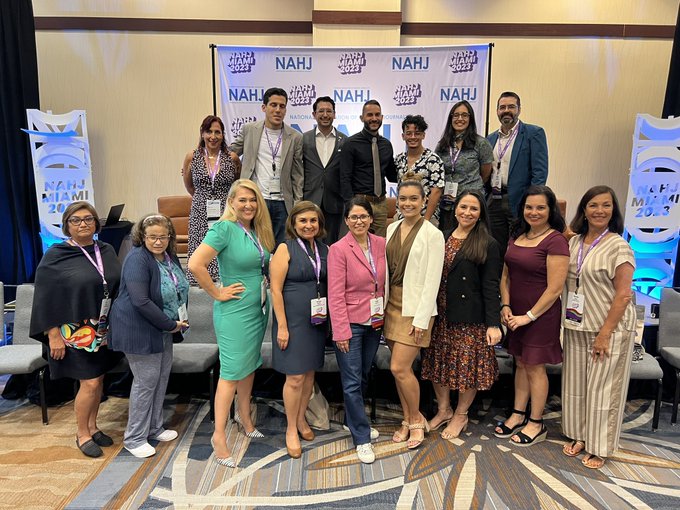
Groups Won’t Address Consequences of Pullout
The National Association of Hispanic Journalists’ pullout of its participation in the planned joint convention in Chicago next summer with the National Association of Black Journalists could cost one or both of the organizations thousands of dollars in penalties, but neither association would discuss the penalty issue Saturday. NAHJ President Yvette Cabrera told members that she could not because “it’s a contract issue.”
Cabrera spoke at a membership meeting at the NAHJ’s annual convention, held this year in downtown Miami.
The yearly meeting took place within minutes of a joint statement by NAHJ and NABJ that said, “Initially, next year’s conference was scheduled to be a joint event but NAHJ expressed its interest in a unique celebration” of its 40th anniversary. “NABJ’s unique celebration was already built into its upcoming schedule of conferences.”
NAHJ plans to celebrate in Hollywood, Calif., in May, exact dates unspecified.
NABJ’s 50th anniversary does not come until 2025. The statement referred to it as a “50th anniversary celebration that starts in Cleveland in 2025 and culminates in Washington, D.C. in 2026.”
NABJ Executive Director Drew Berry, also asked whether there would be a cost to either organization for not delivering the number promised in Chicago, messaged, “The statement is all we have to say.”
The exchanges over the NAHJ pullout came after progress reports from various officers and committee chairs. Some members, while polite, accused the board of hypocrisy and lack of transparency, even as others merely watched the proceedings.
This columnist’s attempt to press Cabrera was captured on Twitter.
Manuelita Nadebah Beck, senior politics editor at the Philadelphia Inquirer, noted that some members objected to continuing to meet in Florida due to restrictions on free expression, hostility to immigrants and other policies championed by Florida Gov. Ron DeSantis. These members were told that NAHJ could not pull out. “And yet you made this decision,” Beck said.
“It’s a very bad look.”
Dianna M. Nañez, executive editor of Arizona Luminaria, referred to the “many unanswered questions.” She urged Cabrera to think of “what can you answer” and urged NAHJ leaders to survey members on their thoughts about the late change of locations to commemorate an anniversary “that we all knew was coming.”
Rebecca Aguilar, immediate past president of the Society of Professional Journalists, told Cabrera that she had been in her shoes as an association president, and so she knows about contracts. But at least the board could answer, “Will we be losing that money?”, Aguilar said, referring to any deposit given the Chicago conference venue.
“The more we know the better. The less you say, the more red flags” go up.
Vanessa Nevarez, a news assignment editor at KGTV-TV in San Diego, cited the loss of an opportunity to celebrate and reaffirm ties with NABJ, which she noted continued to partner with NAHJ after both pulled out of the Unity: Journalists of Color, later Unity: Journalists for Diversity, coalition.
Another speaker said some organizations had already budgeted for one convention that would reach the two groups and that having two separate conventions in different cities might not work for them financially.
Cabrera replied that the joint NABJ-NAHJ statement made clear that “both organizations want to continue to work together” and that “We’ll let the membership know” when the board has something to announce.
A random survey of NAHJ members by the Latino Reporter student project quoted Rafael Olmeda, former NAHJ president and 2009 president of Unity. Part of his comment: “I understand the decision, I know people that went to Vegas that felt like we were the step-children of an NABJ conference.”
But the piece also quoted “Marc Ray, who attended last year’s joint conference between NABJ and NAHJ in Las Vegas and participated in the 2021 virtual student project. Ray “said he enjoyed connecting with journalists from both organizations and even made lasting relationships with members of NABJ.
“ ‘When we had it with NABJ, there were more opportunities to network,’ Ray said. ‘I have mentors in NABJ and I hope to see them soon and reconnect.’ “
Journal-isms asked Robert Quinones, executive director in 2014-15 for the now-disbanded coalition then known as Unity: Journalists for Diversity, whether the associations might owe the Chicago venue thousands of dollars for delivering fewer visitors than promised.
He replied, “The short answer could be yes as the contract may have minimum room nights, food/beverage, room rentals, etc.” However, the issue might be subject to negotiations if an agreement is made to make up the money somewhere else, such as staging a future conference at another venue owned by the company.
“Conference people don’t like to lose money,” Quinones said.
Conference insurance might cover such eventualities if it has already been purchased and the reasons fall under the insurance stipulations, he added.
Frances “Frenchie” Robles, a reporter at the New York Times and member of NAHJ’s Hall of Fame, earlier raised “the elephant in the room,” and asked about the June 30 announcement by David Peña Jr. that he is resigning as NAHJ’s executive director.
Cabrera replied that Peña ‘s resignation was a personnel matter that she could not discuss.
Cabrera said the decision to go to Chicago was made by previous leaders. Hugo Balta, twice president of the organization and now based in Chicago, messaged Journal-isms, “We (the NAHJ board I served with) discussed a joint conference with NABJ, but did not vote on the matter.”
Asked for his view, Balta said, “I’ve always believed a collaborative conference with like kind journalism organizations, beginning with NABJ is a benefit to NAHJ, members, partners, and sponsors.
“It’s disappointing to learn NAHJ will not be joining NABJ in Chicago next year. I’m confident the current NAHJ Board made the decision in the best interest of the organization.”
Mekhalo Medina, anchor/reporter at KNBC in Southern California, and NAHJ president from 2014 to 2016, said, “I truly believe in the collaboration with NABJ and value our close relationship over nearly a decade. I hope it continues after 2024.
“I trust the NAHJ board made the best decision for the organization.
“I am very excited the national conference will be coming to Los Angeles where the organization was founded and is home to the largest Latino market in the country.”
- Adrian Carrasquillo, the Messenger: As Hispanic and Black Journalist Conferences Break Up, Members Lament Loss of “Unity” Ahead of 2024 (July 17)
- CCNMA: The Largest Latino Market in U.S. is nearly 50% Latino, yet Newsrooms Fail to Represent that Reality
- Evelyn Mejia and Itzel Anahi Girón, Latino Reporter: NAHJ members leave 2023 conference with unanswered questions, calls for transparency

Why Teachers and Journalists Need Each Other
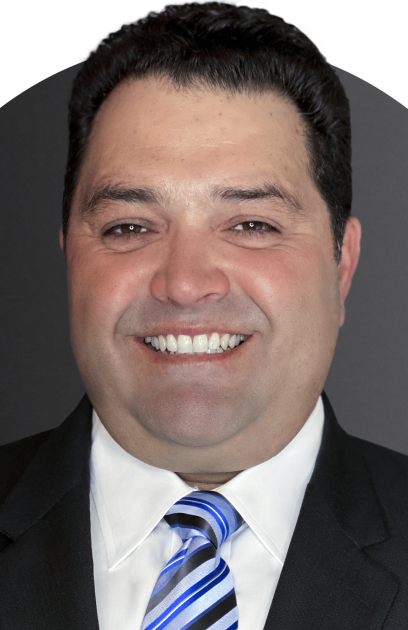 Noel Candelaria (pictured) is secretary-treasurer of the National Education Association, but the 47-year-old was once a Latino ninth-grader in El Paso, Texas. At the National Association of Hispanic Journalists convention Saturday, he shared a story from that time that touches on the symbiotic relationship between teachers and journalists.
Noel Candelaria (pictured) is secretary-treasurer of the National Education Association, but the 47-year-old was once a Latino ninth-grader in El Paso, Texas. At the National Association of Hispanic Journalists convention Saturday, he shared a story from that time that touches on the symbiotic relationship between teachers and journalists.
The textbook had “U.S. history” in the title, but the teacher told the class that “his” story was not what they were going to be taught. The students were going to learn not just about white people’s history, but all Americans’ histories. And so, as a class project, she assigned her charges to interview family members.
When Candelaria, son of Mexican immigrants, completed the assignment, “I said, ‘Wow! I’m really proud of who I am. For the first time, I realized my story is powerful!”
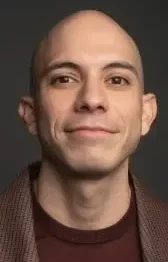 The moderator of the panel, David Artavia (pictured), a Texas native who is senior editor at Yahoo and a former editor of the LGBQT+ publications Out and the Advocate, interjected, ” ‘Texas history’ is Mexican history.”
The moderator of the panel, David Artavia (pictured), a Texas native who is senior editor at Yahoo and a former editor of the LGBQT+ publications Out and the Advocate, interjected, ” ‘Texas history’ is Mexican history.”
The chief takeaway from Candelaria’s anecdote was the importance of “inclusion” in the phrase “diversity, equity and inclusion.” Without self-esteem, students don’t learn as well. They don’t master the critical thinking and other skills essential to becoming journalists.
That failure takes on added significance at a time of teacher shortages and book bans that deprive marginalized groups of the chance to see themselves reflected positively. Those groups include young people of color and increasingly, the children of same-sex couples or those who might be gay themselves. Books featuring such couples have ended up on the “banned” list.
When the schools fail, it’s up to journalists to make up the missing pieces, Artavia said. When culture warriors demonize the marginalized, it’s journalists’ responsibility “to be able to make them real. The journalists’ ability to bring them to the community is so powerful,” Artavia added.
As NPR reported in a March story on teacher vacancies, “Schools that serve high-poverty neighborhoods and/or a ‘high-minority student body’ were more likely to have reported vacancies in October 2022, federal data show.” Fewer would-be teachers are joining the profession, Candelaria said, partly because of the political battlefields that schools have become.
Journalism “clubs” and advisers to school newspapers, he said, are more likely to know little about journalism.
The breakfast plenary was titled “Covering Florida’s ‘Don’t Say Gay’ and Other Speech-Suppressing Initiatives.” The reference is to the Florida law passed in March that bars K-3 lesson plans that discuss sexual orientation or gender identity. It is feared that the law has a chilling effect beyond the third grade. The discussion was one of several on LBGTQ topics. An NAHJ committee produced a Spanish-language style manual “on LGBTQIA+ communities.”
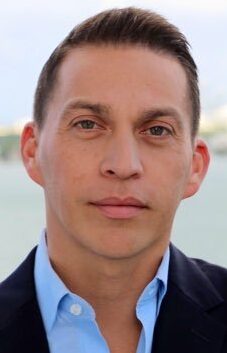 The third member of the “Don’t Say Gay” panel was Miami-based CBS News reporter Manuel Bojorquez (pictured), who said his mother crossed the U.S. border in 1980 with three children, including him, fleeing the civil war in El Salvador.
The third member of the “Don’t Say Gay” panel was Miami-based CBS News reporter Manuel Bojorquez (pictured), who said his mother crossed the U.S. border in 1980 with three children, including him, fleeing the civil war in El Salvador.
Thus, the reporter described himself as “a gay man and an immigrant.”
Bojorquez said he sees part of his role as adding context that might be missing in other stories. That includes portrayals of Latin America. “I want to present to the world that Latin America is more than a set of issues — it is a vibrant place,” he said, and viewers should see “the full picture of who we are.”
Candelaria cited a “foundational relationship between journalism and education.” He urged journalists to advocate for “a strong public school system that every child can access” and to examine why we don’t have that. Journalists should also encourage parents to run for school boards, providing them “an opportunity to directly understand the impact of policy language and implementation,” and in covering the schools beat, should also look for other adults who affect their children.
He recalled the custodian in his El Paso district who loved math and would share what he knew with Candelaria as a student.
“Ask the teachers — who are the other adults in the school who have an impact on your child’s life?” Candelaria urged. (Added July 17)
- Melissa Goldin, Associated Press: Florida blogger bill falsely tied to DeSantis (March 8)
- Mary Ellen Flannery, National Education Association: NEA RA 2023: NEA President Becky Pringle Calls for Action! (Pringle called on NEA Representative Assembly delegates to organize for the freedom to teach the truth, for the safety and wellbeing of LGBTQ+ students, and more.)
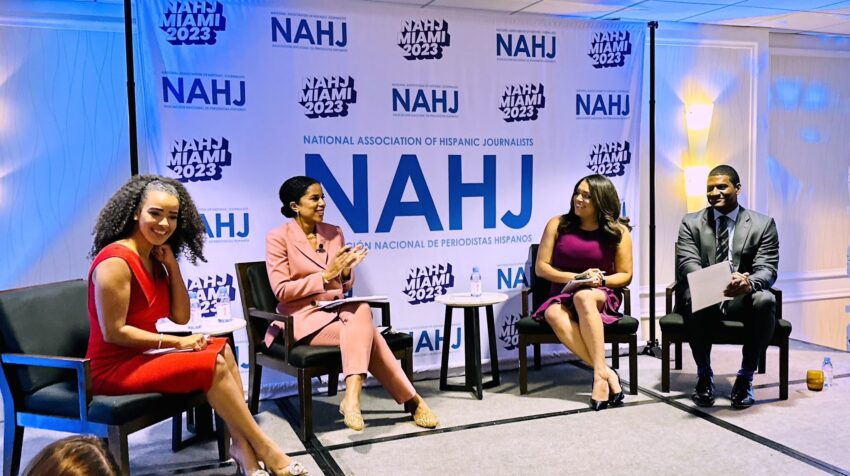
Colorism a Troublesome Relic Affecting Newsrooms
CBS News correspondent Adriana Diaz is grateful that she had a strong mother who told her she was beautiful. After all, Diaz told an audience at the National Association of Hispanic Journalists convention, some kids would be instructed not to crawl on the floor because their knees would get darker.
Her dad had little patience for such anti-Blackness as well, Diaz said. He would tell his children not to use the term “bad hair.” But the prideful attitudes face crosswinds from earlier generations. The advice for Latin American sons and daughters to marry someone lighter than themselves, for the sake of the kids, still holds currency in some quarters.
The Friday luncheon plenary was called “Colorism in Professional Advancement.” It was moderated by CNN’s Omar Jimenez, an Afro-Latino who won awards for his courage after he and his crew were arrested in 2020 while they were on air in Minneapolis during protests after the murder of George Floyd.
Jimenez brought with him statistics from the United Nations about his father’s native Colombia that demonstrated the tie between colorism and economic progress in too much of Latin America. And as bilingual Tampa, Fla., television reporter Angelina Salcedo said, “They bring that here. That’s all they know.”
The U.N.’s Economic Commission on Latin America and the Caribbean “states that Afro-Colombian men in Cartagena occupying high-ranking positions, such as directors, earn one fifth the income of their non-Afro-Colombian male colleagues, and Afro-Colombian women in professional positions earn one fourth as much as their non-Afro-Colombian female counterparts. . . .”
Jimenez went on to cite the increasing worldwide sales figures, in the billions, for skin-lightening products.
The attitudes manifested in those numbers find their way into newsrooms. On Twitter, Rebecca Aguilar, immediate past president of the Society of Professional Journalists, posted a photo of the NAHJ session and wrote, ” In my career I was turned down for a job on a national show. My agent was told that they needed a Latina who looked white. It was a white mgt team.”
The CROWN Act, barring discrimination because of hair texture and style, is now law in more than 20 states.
Yet panelist Carolina Peguero, a Univision anchor in Miami, said she still has to do her own hair and makeup because no one in the station’s makeup department can.
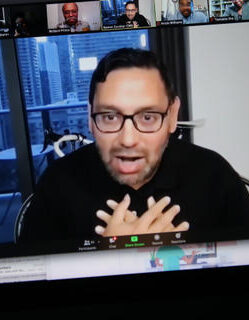 (At a Journal-isms Roundtable in 2021, Ramon Escobar (pictured), senior vice president for talent recruitment & development at CNN Worldwide, declared that at his network, “if people want to wear their hair naturally, that’s who they are, and that’s, you know, an expression of their authentic self. We have been very, very clear about this at our organization.”
(At a Journal-isms Roundtable in 2021, Ramon Escobar (pictured), senior vice president for talent recruitment & development at CNN Worldwide, declared that at his network, “if people want to wear their hair naturally, that’s who they are, and that’s, you know, an expression of their authentic self. We have been very, very clear about this at our organization.”
(CNN even “worked hard, also, to get some folks behind the scenes on the hair and makeup team. If you’re going to be diverse, you should be diverse in every area.”)
The solutions to these issues are familiar — boosting esteem among people of color, bringing more of them into the newsroom, and educating those perpetuating those anti-Black practices.
“Be very proud of where you came from,” said Salcedo of Tampa’s WTSP-TV. Put that forward as an advantage that you bring to the table.
Jimenez said he sometimes has to prove he’s Latino enough for Latinos and Black enough for Black people, but he recognizes that his very presence can inspire others. One reason he knows that is that his grandmother constantly tells him.
Jimenez also said that while “you don’t want to be pigeonholed” into doing stories about your own community, neither do you want to “let someone else do it” and say later, “They missed something. I should have done that.”
For Diaz, being a role model, mentoring and offering support to others like her are key. “I can’t tell you how many people want me to tell their kids about loving their hair,” said Diaz, whose grandparents came from the Dominican Republic.
She also urged reporters to demonstrate to their audience through the people featured in their stories “that anyone, no matter what they look like, has value. That’s how we can make a difference.”
Fellow journalists will appreciate another practice that helps, she said. “I try to uplift my colleagues.” (Added July 18)
NAHJ Exits Planned Convention With NABJ
June 13, 2023, updated June 14
Groups Were to Meet Together in Chicago Next Year
McElroy Rejects J-Director Job After ‘DEI Hysteria’
CNN’s Victor Blackwell Finds Audacious Ancestors
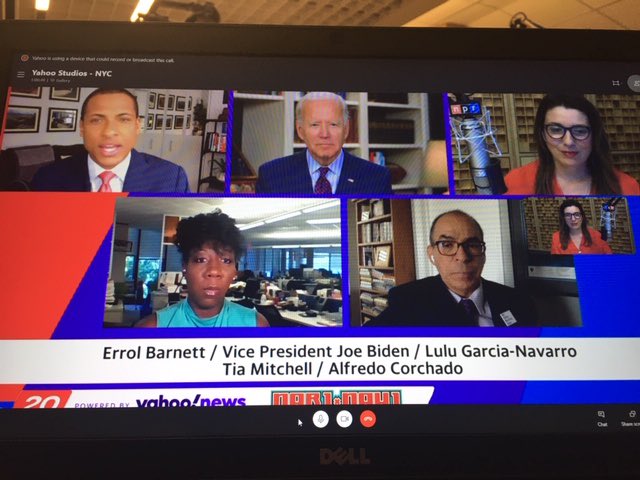
Groups Were to Meet Together in Chicago Next Year
The National Association of Hispanic Journalists is pulling out of a planned election-year joint convention with the National Association of Black Journalists in Chicago in 2024, advertising in its program booklet that the 3,700-member NAHJ is holding its own 40th anniversary conference in Hollywood, Calif.
Drew Berry, executive director of NABJ, reiterated to Journal-isms Thursday, “We’re going to be in Chicago,” speaking of his own organization. Berry made a brief visit to the NAHJ convention in downtown Miami.
“No comment,” said NAHJ president Yvette Cabrera, asked about the status of the joint convention at her group’s opening reception Wednesday. An official announcement is likely to be made Saturday at NAHJ’s annual Hall of Fame Gala and Awards Ceremony. It could not be determined what, if any, legal or financial consequences there might be for NAHJ.
[Updating: NAHJ said Friday: “The decision to host independent conventions was borne out of a mutual interest in commemorating NAHJ/NABJ milestone anniversaries with individual conferences in separate cities in 2024.” It said that the “no comment” referred to a question about what was discussed in the board’s executive session.
[The articles of incorporation for NAHJ were signed in February of 1984. NABJ dates its founding to Dec. 12, 1975.
[Berry messaged Friday, “We’ll have a joint statement this weekend.”]
The NABJ website is still advertising the joint convention effort. “Join us for an extraordinary gathering filled with innovative programs, remarkable presenters and fantastic networking opportunities, as NABJ & NAHJ members, partners, colleagues and supporters come together in Chicago, Illinois for the 2024 NABJ-NAHJ Convention and Career Fair,” it says. “July 31, 2024 12:00 am – August 4, 2024.”
[Update: NAHJ’s name was removed Friday from NABJ’s description of the 2024 convention.]
The stand-alone NAHJ convention is to take place in May, according to the program booklet.
The behind-the-scenes machinations over NAHJ’s pullout were largely kept out of earshot of convention goers, who arrived as some media organizations are ramping up their efforts to attract Latinos, or publicizing the importance of the Hispanic audience.
Just a few examples:
- Gannett, though it has recently undertaken layoffs, has advertised for a director of Latino initiatives.
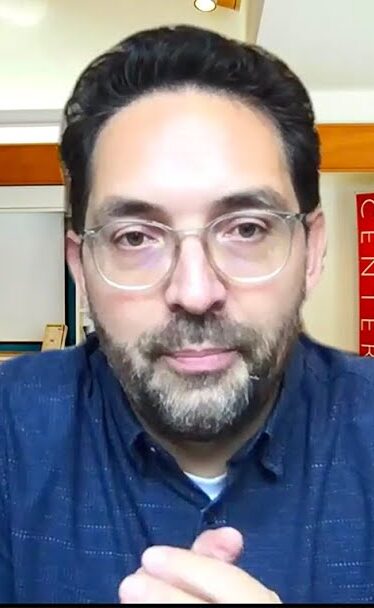 The New Yorker has hired Geraldo Cadava (pictured), a history professor at Northwestern University, as a contributing writer, with a mandate to cover Latino history, politics and culture. “Gerry is the author of two books, ‘The Hispanic Republican: The Shaping of an American Political Identity, from Nixon to Trump’ and ‘Standing on Common Ground: The Making of a Sunbelt Borderland,'” editors David Remnick and Michael Luo wrote staffers, “and is currently writing a history of Latinos over the past five hundred years, to be published by Crown in 2026. He’s also a co-editor-in-chief of Public Books, for which he hosts the ‘Writing Latinos’ podcast. . . .”
The New Yorker has hired Geraldo Cadava (pictured), a history professor at Northwestern University, as a contributing writer, with a mandate to cover Latino history, politics and culture. “Gerry is the author of two books, ‘The Hispanic Republican: The Shaping of an American Political Identity, from Nixon to Trump’ and ‘Standing on Common Ground: The Making of a Sunbelt Borderland,'” editors David Remnick and Michael Luo wrote staffers, “and is currently writing a history of Latinos over the past five hundred years, to be published by Crown in 2026. He’s also a co-editor-in-chief of Public Books, for which he hosts the ‘Writing Latinos’ podcast. . . .”
 The Los Angeles Times announced the launch Friday of De Los, “a community-driven brand and platform . . . . Created as a space to explore all things Latinidad – in Los Angeles and across the country – De Los offers reporting and commentary, graphic comics and topical social videos, a forum to celebrate or critique the news of the day, and a way to connect through a shared sense of culture and identity. . . .”
The Los Angeles Times announced the launch Friday of De Los, “a community-driven brand and platform . . . . Created as a space to explore all things Latinidad – in Los Angeles and across the country – De Los offers reporting and commentary, graphic comics and topical social videos, a forum to celebrate or critique the news of the day, and a way to connect through a shared sense of culture and identity. . . .”
- NAHJ claimed success in persuading the L.A. Times to add three journalists of color to its investigative team. More on that later.
- A Hispanic radio conference was told that “the Hispanic population experienced remarkable growth. . . . Projections indicate that the Hispanic population will reach 111.2 million by 2060, comprising 27.5% of the total U.S. population. This expanding demographic presents exciting opportunities for the radio industry as the listener base continues to grow explosively,” Radio Ink reported.
The roots of the joint conventions between NABJ and NAHJ go back as far as the 1980s, when Juan González, an active member of NAHJ, and Will Sutton Jr., an active member of NABJ, started comparing notes about their experiences as journalists of color. The two men, both in Philadelphia, met in 1986. Separately, in 1988, DeWayne Wickham, then NABJ president, convened the first joint meeting of the boards of NABJ, NAHJ, the Asian American Journalists Association and the Native American Journalists Association. They became Unity: Journalists of Color, later Unity: Journalists for Diversity.
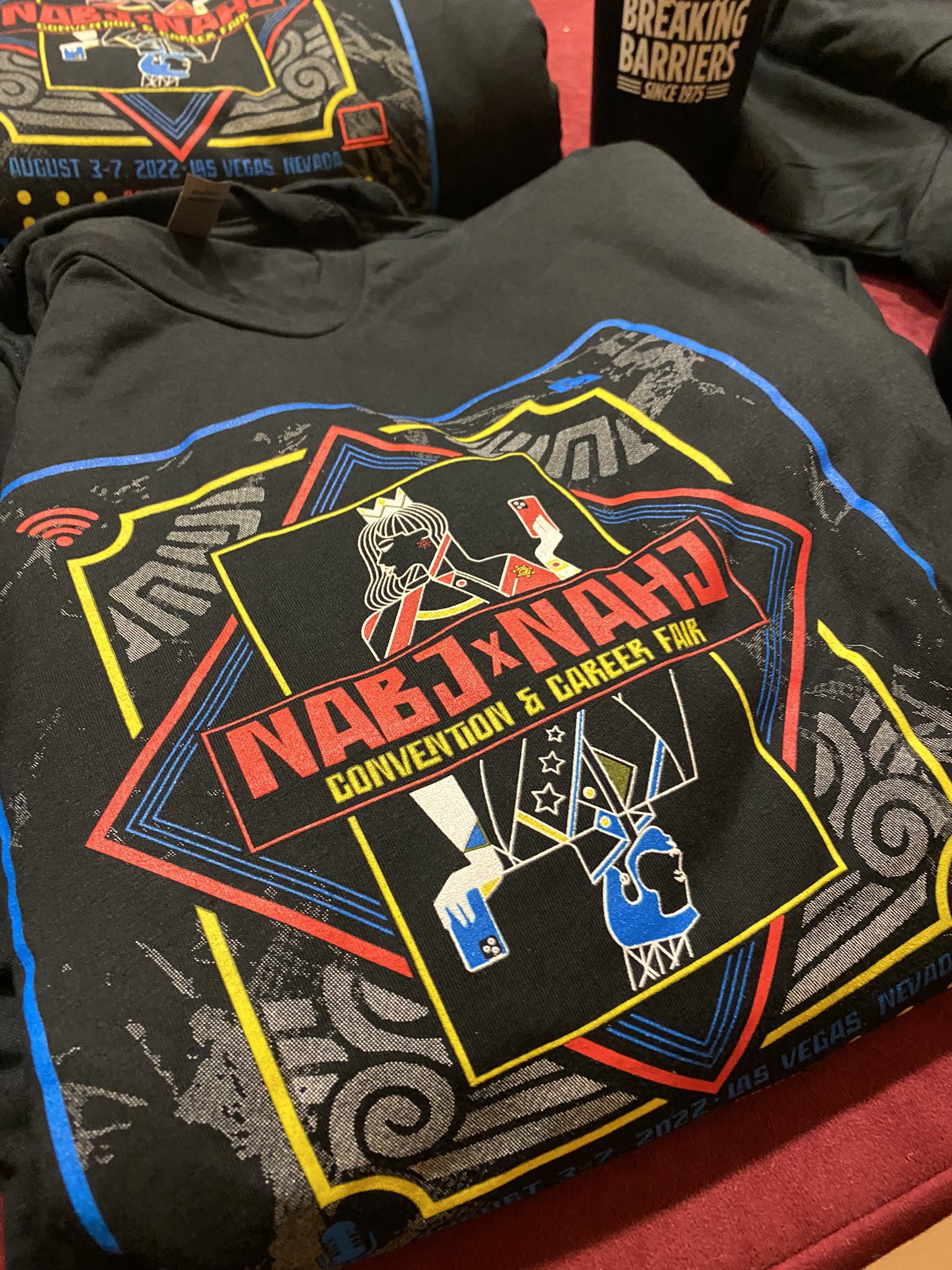 When that coalition dissolved in 2018, NABJ and NAHJ continued to periodically meet jointly, most recently in 2022 in Las Vegas. That gathering drew 4,750 registrants, Berry told the NABJ board in October. NABJ attracted 3,417 and NAHJ 1,333 to Las Vegas for the Aug. 3-7 event.
When that coalition dissolved in 2018, NABJ and NAHJ continued to periodically meet jointly, most recently in 2022 in Las Vegas. That gathering drew 4,750 registrants, Berry told the NABJ board in October. NABJ attracted 3,417 and NAHJ 1,333 to Las Vegas for the Aug. 3-7 event.
This year, the Hispanic journalists group counted 1,550 registrations, according to preliminary figures, Yaneth Guillen-Diaz, interim chief operating officer, told a board of directors meeting Wednesday. Guillen-Diaz, who had been senior director of training and membership, was appointed interim COO after the resignation of Executive Director David Peña Jr., on June 30, effective July 28. Peña said then he would not be at the convention.
The 1,550 registration figure was more than the 1,300 the host hotel, the InterContinental Miami, could accommodate, and the group established a waiting list. Registration closed two days early.
Some attendees mentioned Peña’s resignation as they networked and greeted friends and colleagues, but the development received scant attention at Wednesday’s board meeting. The most debated item was a motion that established guidelines on communications.
Mc Nelly Torres, national vice president, digital, called the guidelines “fascistic,” while Julio Cesar Chavez, national vice president, broadcast, argued that “we are a professional organization and we will have professional standards.”
[Updated July 14: NAHJ says the guidelines state, “Should a board member feel obligated or to share information publicly they believe is relevant to the ethical operation of the NAHJ outside the board, they should notify the president as such public remarks can impact the organization and must be vetted for facts.
[“These policies do not censor board members who feel a deep sense of duty or conviction in reporting facts they find crucial to helping the NAHJ course correct on any matter.
[“However, board members must thoroughly vet and verify and exhaust all communication avenues for resolution before taking a drastic step toward publicizing internal board matters and ensure they are sharing factual and accurate information.
[“The goal is to discourage the spread of disinformation and prevent actors from weaponizing information – maladies of our present age.”]
The rules passed overwhelmingly on a roll-call vote.
The board also heard about the success of palabra, a multimedia platform in which “NAHJ freelance members cover stories and communities that have been disregarded in larger news outlets based on the ideology that ‘ethnic’ news is only an issue for marginalized communities and not a human issue.” Over the past 18 months, palabra has attracted 99 contributors and published 162 stories, 85 of them original and 28 of them bilingual, said managing editor Valeria Fernandez. She cited syndication with the digital group Advance Local.
NAHJ held a news conference Wednesday to discuss a preliminary report showing “an alarming lack of parity on investigative news teams, along with key areas of concern and calls for creating strategies for improvement.”
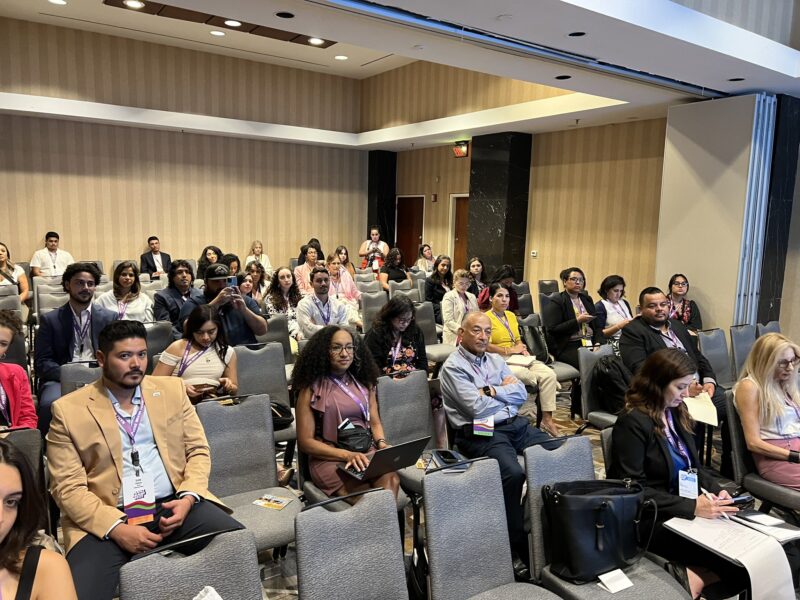
But the organization claimed success in persuading the Los Angeles Times to add three journalists of color to its investigative group. “The Times added these three staffers to the investigative team from within the organization, moving them to the investigations team after the Task Force strike team met with the Los Angeles Times last year,” messaged Cabrera. “They are journalists of color. Here’s the announcement.
“In a separate meeting with NAHJ more recently, [Executive Editor] Kevin Merida gave credit to our team for having the dialogue with the Times, which prompted the moves internally.”
Among the plenary sessions and meal events this year were “Climate Change and Environmental Justice,” “Artificial Intelligence,” “Colorism in Professional Advancement,” “Violence Against Journalists Here and Abroad,” “Covering Florida’s ‘Don’t Say Gay’ and Other Speech-Suppressing Initiatives,” “Impact of the Lack of Latinos in Investigative Teams” and “Misinformation/Disinformation U.S. Latino Community.”
Placed among the media groups and others at the career fair was a table from the little-known Office of Diversity and Inclusion of the U.S. House of Representatives, founded in 2020 under the administration of former Democratic House Speaker Nancy Pelosi and continued under Republican Speaker Kevin McCarthy.
“We’re interested in educating our communities about careers in Congress,” Deputy Director Jeyben Castro told Journal-isms.
 One staple of this and similar conventions has been advice to young journalists. Cecilia Vega (pictured), a correspondent for CBS’ “60 Minutes” who until January was a White House correspondent and weekend anchor for ABC News, spoke at such a session Wednesday.
One staple of this and similar conventions has been advice to young journalists. Cecilia Vega (pictured), a correspondent for CBS’ “60 Minutes” who until January was a White House correspondent and weekend anchor for ABC News, spoke at such a session Wednesday.
Vega told the “collegiate ’emerging journalist’ convention orientation” that life for beginning reporters can be one of inconvenient hours and workdays, but that even as a White House correspondent, she had to worry about work-life balances. Covering the White House was demanding, she said, but “doing it under [President Donald] Trump was like drinking from a firehose,” she told Journal-isms afterward. “It didn’t stop for four years. How do you find that balance? I didn’t do it successfully … because it is so all-consuming.
“At the end of four years, I said, ‘I need to slow down a bit,’ ” asking herself how one could keep up such a pace.
Then came a call from “60 Minutes.” Was the stress of covering that demanding White House beat the reason Vega took the offer?”
No, Vega said.
She left “because it’s 60 Minutes,” a dream assignment and the most-watched show on television.
If CBS calls with an enviable job offer like that, “you go.”
- Anthony Bautista, Latino Reporter: NAHJ pulls out of joint 2024 conference with Black journalists association
- Michael Butler, Miami Herald: Hispanic journalism convention kicks off in Miami, one of America’s most diverse cities
- Daniela Cazares, Latino Reporter: NAHJ has new rules about how and when board members can talk to each other, the public
- Gisselle Medina, Latino Reporter: NAHJ executive director resigns abruptly. Search for successor to begin after conference.
- Xiomara Villarreal-Gerardo, Latino Reporter: NAHJ hosts mask-optional Miami convention, prioritizes attendee choice and safety
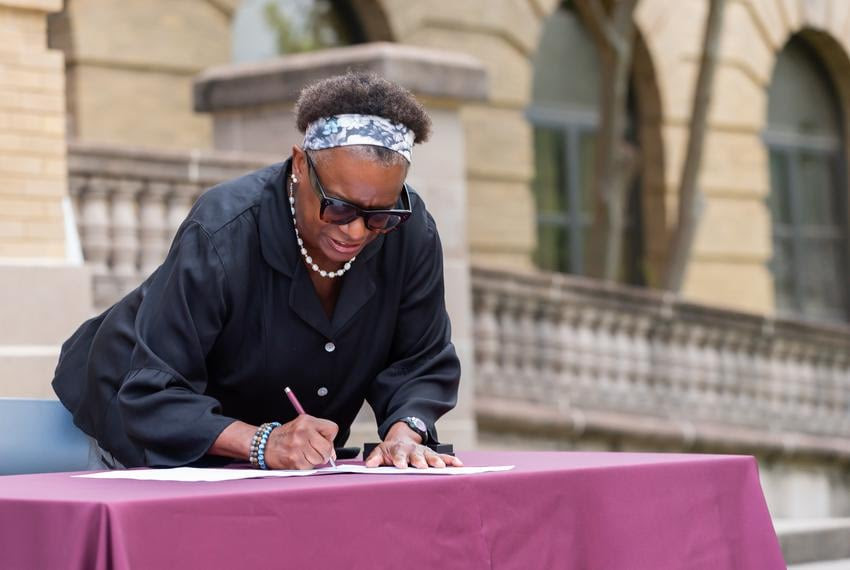
McElroy Rejects J-Director Job After ‘DEI Hysteria’
In a case echoing Nikole Hannah-Jones’ experience in 2021 at the University of North Carolina, Kathleen O. McElroy has declined an offer to become the director of Texas A&M University’s new journalism school. McElroy cited concerns about “DEI hysteria” (Diversity, Equity, and Inclusion) as the reason behind the university’s decision to water down her contract, as Reform Austin reported this week, citing an interview McElroy gave to the Texas Tribune.
On live television, Hannah-Jones told “CBS This Morning” co-host Gayle King on July 6, 2021, that she was spurning a faculty appointment at the University of North Carolina at Chapel Hill to instead start a center for investigative journalism at Howard University. She had been courted by UNC for a Knight Chair, but the school’s namesake donor Walter E. Hussman Jr. was said to have objected to the “1619 Project” author, leading to delays in an offer including tenure.
In McElroy’s case, the Texas A&M University offer “included the kind of fanfare usually reserved for college coaches and athletes” in announcing her hire, Kate McGee reported Tuesday for the Tribune.
“The university set up maroon, silver and white balloons around a table outside its Academic Building for an official signing ceremony.” It was there that McElroy, “a respected journalist with a long career, officially accepted the position to run the new program and teach as a tenured professor, pending approval from the Texas A&M University System Board of Regents.
“McElroy, a 1981 Texas A&M graduate, was the director of the University of Texas at Austin’s School of Journalism between 2016 and 2022, where she is a tenured professor. Earlier, she spent 20 years in various editing roles at The New York Times until heading to UT-Austin to pursue her doctorate.
“She has studied news media and race, with a focus on how to improve diversity and inclusion within newsrooms, and spent her career covering other areas like sports and obituaries. Her master’s thesis focused on the obituaries of civil rights leaders. Now, she was excited to head back to her alma mater to build a brand new program there.
“But in the last several weeks, McElroy told The Texas Tribune, the deal with Texas A&M fell apart.
“In the days after the signing ceremony, she said, A&M employees told her an increasingly vocal network of constituents within the system were expressing issues with her experience at the Times and with her work on race and diversity in newsrooms, McElroy said.
“Behind the scenes, A&M spent weeks altering the terms of her job. After hearing about the concerns, McElroy agreed to a five-year contract position without tenure, which would have avoided a review by regents. On Sunday, she received a third offer, this time with a one-year contract and emphasizing that the appointment was at will and that she could be terminated at any time. She has rejected the offer and shared all of the offer letters with the Tribune.
“The situation comes at a fraught time at Texas public universities. Schools are preparing for a new state law to go into effect in January that bans offices, programs and training that promote diversity, equity and inclusion. Recently, the Texas A&M System started a systemwide audit of all DEI offices in response to the new law. . . .”
Alums told the Eagle, newspaper at Texas A&M University, of their anger and disappointment.
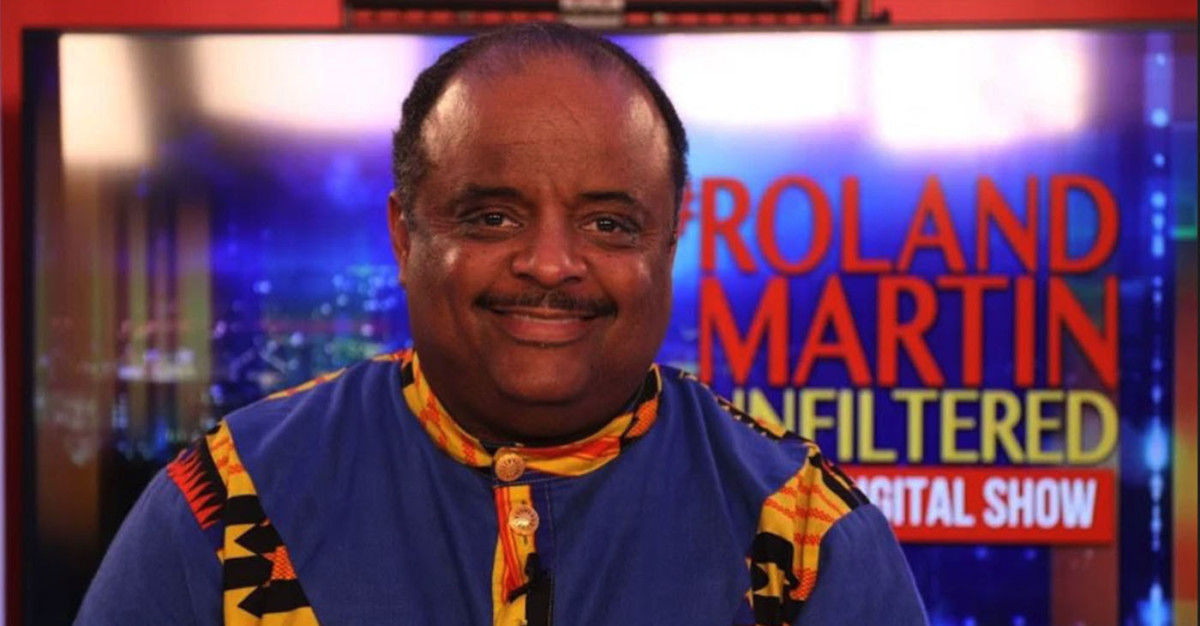 “For the first time ever, Roland Martin (pictured) is ashamed to be an Aggie,” Alex Miller reported.
“For the first time ever, Roland Martin (pictured) is ashamed to be an Aggie,” Alex Miller reported.
“Martin, A&M Class of 1991 and longtime journalist and political analyst, called the actions by A&M leadership that caused McElroy to spurn her offer to return to her alma mater petty and childish.
“ ‘What Texas A&M is saying is that someone like me, who is in three halls of fame, somehow isn’t good enough for A&M,’ Martin said. ‘This situation is why Texas A&M is considered by many to be a second-rate university. Actions like this is why we will never be considered one of the nation’s preeminent universities.’
“Numerous other A&M former students took to social media to express their thoughts and opinions on McElroy’s situation, including a pair of fellow esteemed journalists.
“Charean Williams, A&M Class of 1986, NFL reporter and A&M Distinguished Alumnus, wrote on Twitter: ‘A&M’s loss is Texas’ gain. It’s disheartening, frustrating and embarrassing, and worse that we do this to one of our own.’
“Richard Oliver, A&M Class of 1981 and longtime Texas sportswriter, said: ‘That [McElroy] is being forced to retreat from new position at her beloved alma mater [A&M] because of anonymous concerns about her race, gender and background is shameful. I have always been proud to be an Aggie. Today, not so much.’
“A&M’s Former Journalism Students Association released a a statement on McElroy’s departure Wednesday afternoon and said news she is no longer coming to A&M is a major loss. . . .”
CNN’s Victor Blackwell Finds Audacious Ancestors
An estimated 16.6 million people have tuned in to Henry Louis Gates’ PBS show “Finding Your Roots,” in which the Harvard scholar traces his guests’ ancestry. And now CNN anchor Victor Blackwell can testify to the emotional impact such discoveries can have.
Blackwell visited the new International African American Museum in Charleston, S.C., and traced his own family tree with resources from the museum’s Center for Family History.
“ ‘Make sure you got a box of Kleenex by you, and sit there and enjoy,’ the museum’s top genealogist, Shelley Murphy, advised him via laptop from the University of Virginia as she guided him back to 1712.”
The journey revealed “a wending saga starring two enslaved women whose audacity and legal dexterity paved the way for their descendants’ freedom and opportunity,” CNN’s Devon M. Sayers reported June 19.
To subscribe at no cost, please send an email to journal-isms+subscribe@groups.io and say who you are.
Facebook users: “Like” “Richard Prince’s Journal-isms” on Facebook.
Follow Richard Prince on Twitter @princeeditor
Richard Prince’s Journal-isms originates from Washington. It began in print before most of us knew what the internet was, and it would like to be referred to as a “column.” Any views expressed in the column are those of the person or organization quoted and not those of any other entity. Send tips, comments and concerns to Richard Prince at journal-isms+owner@
View previous columns (after Feb. 13, 2016).
View previous columns (before Feb. 13, 2016)
- Diversity’s Greatest Hits, 2018 (Jan. 4, 2019)
- Book Notes: Is Taking a Knee Really All That? (Dec. 20, 2018)
- Book Notes: Challenging ’45’ and Proudly Telling the Story (Dec. 18, 2018)
- Book Notes: Get Down With the Legends! (Dec. 11, 2018)
- Journalist Richard Prince w/Joe Madison (Sirius XM, April 18, 2018) (podcast)
- Richard Prince (journalist) (Wikipedia entry)
- February 2018 Podcast: Richard “Dick” Prince on the need for newsroom diversity (Gabriel Greschler, Student Press Law Center, Feb. 26, 2018)
- Diversity’s Greatest Hits, 2017 — Where Will They Take Us in the Year Ahead?
- Book Notes: Best Sellers, Uncovered Treasures, Overlooked History (Dec. 19, 2017)
- An advocate for diversity in the media is still pressing for representation, (Courtland Milloy, Washington Post, Nov. 28, 2017)
- Morgan Global Journalism Review: Journal-isms Journeys On (Aug. 31, 2017)
- Diversity’s Greatest Hits, 2016
- Book Notes: 16 Writers Dish About ‘Chelle,’ the First Lady
- Book Notes: From Coretta to Barack, and in Search of the Godfather
- Journal-isms’ Richard Prince Wants Your Ideas (FishbowlDC, Feb. 26, 2016)
- “JOURNAL-ISMS” IS LATEST TO BEAR BRUNT OF INDUSTRY’S ECONOMIC WOES (Feb. 19, 2016)
- Richard Prince with Charlayne Hunter-Gault, “PBS NewsHour,” “What stagnant diversity means for America’s newsrooms” (Dec. 15, 2015)
- Book Notes: Journalists Follow Their Passions
- Book Notes: Journalists Who Rocked Their World
- Book Notes: Hands Up! Read This!
- Book Notes: New Cosby Bio Looks Like a Best-Seller
- Journo-diversity advocate turns attention to Ezra Klein project (Erik Wemple, Washington Post, March 5, 2014)
->
Support Journal-ismsDonations are tax-deductible.

